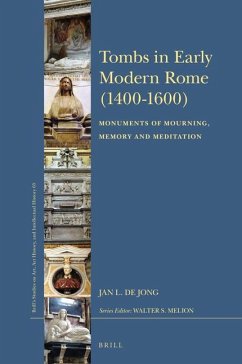In Tombs in Early Modern Rome (1400-1600), Jan L. de Jong reveals how funerary monuments, far from simply marking a grave, offered an image of the deceased that was carefully crafted to generate a laudable memory and prompt meditative reflections on life, death, and the hereafter. This leads to such questions as: which image of themselves did cardinals create when they commissioned their own tomb monuments? Why were most popes buried in grandiose tomb monuments that they claimed they did not want? Which memory of their mothers did children create, and what do tombs for children tell about mothers? Were certain couples buried together so as to demonstrate their eternal love, expecting an afterlife in each other's company?
Bitte wählen Sie Ihr Anliegen aus.
Rechnungen
Retourenschein anfordern
Bestellstatus
Storno








